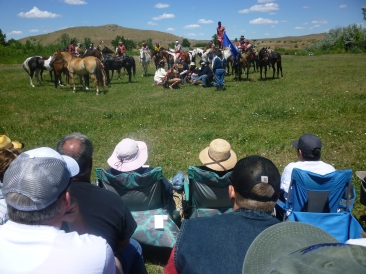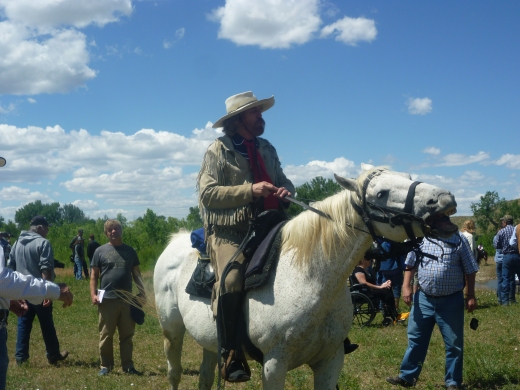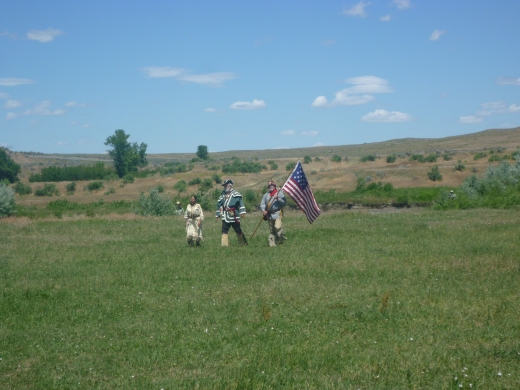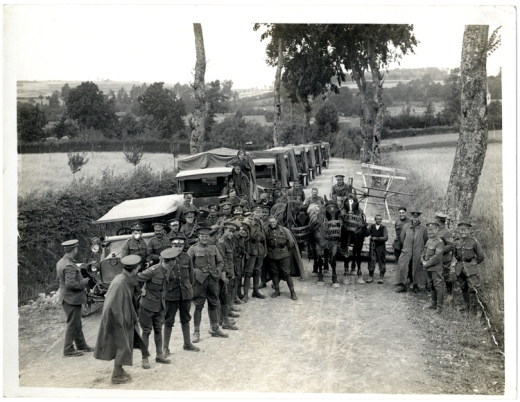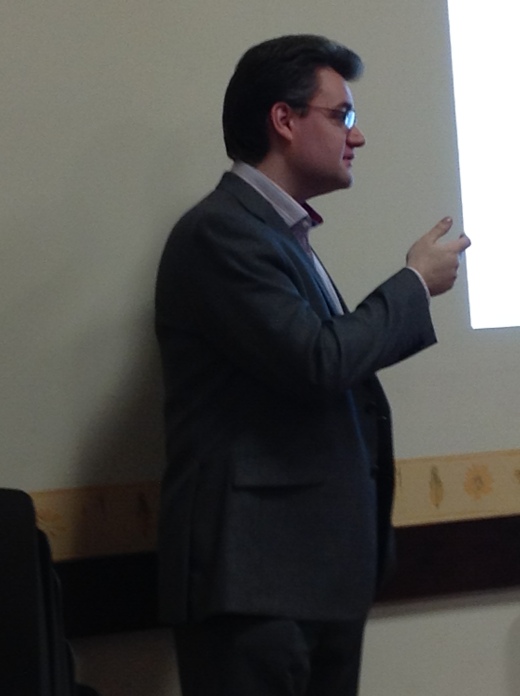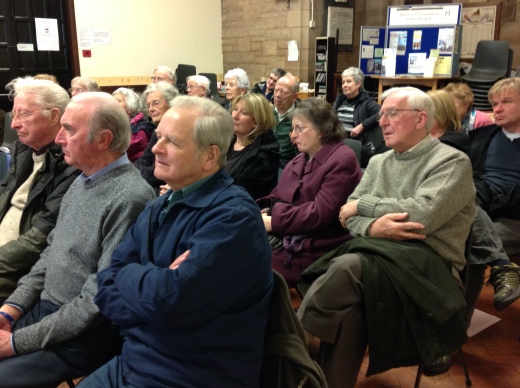I am pleased to invite all our members and friends to join us for the A.G.M. on Monday 12th September at 7.30pm prompt. Our venue is the Sutcliffe Suite, Bolton School Girls’ Division, Chorley New Road, Bolton, BL1 4PA. The agenda, minutes of last year’s A.G.M. and the secretary’s report are available below. If you wish to nominate anyone for office at this meeting please inform the secretary soon, and at least two weeks before the meeting. The A.G.M. will be followed by a short talk from Ms Keri Nicholson on ‘Stories from the Hulton Archive’. If you are able to pass one details of the programme to someone you know, please do – contact the secretary for further copies of the programme brochure.
Thank you for your support of our events and lectures last season, and the committee hopes that a greater number of Full Members, especially those who live locally, will be able to join us for some or all of the coming season’s meetings. Branch Members are asked to consider becoming Full Members; this includes the quarterly members’ journal ‘The Historian’. It would help our Treasurer if individual Branch Members were able to send a £20 cheque for their subscriptions (made payable to ‘The Historical Association’) to Geoffrey Berry in advance of the A.G.M. Joint membership for two members at the same address will be maintained at £35. I look forward to seeing you in September.
Historical Association Bolton Branch
Annual General Meeting 2016
7.30pm, Bolton School Girls’ Division
Monday 12th September 2016
Agenda
1. Apologies
2. Minutes of the AGM held on Monday 7th September 2015 and Matters Arising
3. Chairman’s Report and Presentation of the 2016-17 Programme
4. Treasurer’s Report
5. Secretary’s Report
6. Election of Officers and Committee for 2016-17
Chairman M. Shipley
Vice President G. Redworth; M Shipley
Treasurer G. Berry
Secretary J. Hyde
Committee Members J. Ball; D. Johnson; C. Owen
7. A.O.B.
Historical Association Bolton Branch
Annual General Meeting 2015
7.30pm, Bolton School Girls’ Division
Monday 7th September 2015
Minutes
1. Apologies: Dr G. Redworth, Mr David Redfern, Mr Eccles
2. Lilian Rigby: Treasurer Geoffrey Berry paid tribute to committee member Lilian Rigby, who died aged 93 during our summer break. A Jubilee Fellow of the HA, Mrs Rigby was a staunch supporter of the branch and attended a committee meeting only weeks before her death. A round of applause was given in appreciation of her contribution.
3. Minutes of the AGM held on Monday 8th September 2014 and Matters Arising
The minutes were passed unanimously as a correct record of the meeting.
Matters Arising: Mrs Wood updated the branch on the Hulton Archive appeal. An exhibition will be held in Preston, beginning 18 September. Mr Berry reported that the branch had given a donation. The delay due to the branch committee meeting meant that it had not arrived in time to help with the purchase of the Hulton Archive, but it will go towards the cataloguing which is essential for future research.
4. Chairman’s Report and Presentation of the 2015-16 Programme:
The chairman commended the programme for the coming season, thanked the secretary for her work and asked people to take extra copies and pass them on to their friends to spread the news. The book sale will begin in earnest at the next meeting.
5. Treasurer’s Report
Accounts have been completed to 30 June and sent to HQ. Mr Berry made the following report:
“Firstly can I report my delight that we have been relieved from the lack of security for the venue of our meetings thanks to the Headmistress of Bolton School, Girls’ Division and Mr Craig Owen. We are extremely happy to have returned to Bolton School where our Branch was founded about 90 years ago.
This has also benefited us financially and helped to reduce our financial worries for the immediate future. Accordingly the Committee felt it right to make a donation of £250 to the School which we understand will help towards their 6th form expenses. If our financial progress continues I would hope to increase this sum in future years.
Turning to the Accounts, the number of paid-up Associate Members was 27 and the Accounts produced tonight show that income from visitors increased to £264 largely through the fantastic attendance at the Lord Hennessy lecture last November. The excursion in May to the newly re-opened Whitworth Art Gallery was a success and incurred no liability on Branch Funds.
Total income is slightly down to £1150, expenditure is similar to the previous year leaving a surplus on the year of £269. Cash flow is good and may I again thank those members who have sent cheques in advance thus saving time and trouble tonight and enabling us to start the year with cash of £230 added to the bank balance. I can therefore report a very successful year while stressing that our long-term continuity depends on maintaining and increasing our membership and visitor numbers.
Finally on a personal note I have to say that I consider I have long passed the age for remaining Treasurer; after about 40 years in the job I would welcome a successor. Any younger member who is able and willing should take over soon and I will be happy to provide training as necessary.”
The accounts were unanimously approved.
6. Secretary’s Report
The secretary, Dr Jenni Hyde, read the report on the 2014-5 season that she sent to HQ during the summer, then appealed to branch members to fill in new membership forms and, as always, to consider becoming full members of the HA.
7. Election of Officers and Committee for 2015-16
Chairman M. Shipley
Vice President G. Redworth; M Shipley
Treasurer G. Berry
Secretary J. Hyde
Committee Members J. Ball; D. Johnson; C. Owen
The committee were re-elected unanimously.
8. A.O.B.
No other business was reported. The meeting closed at 8.05pm and was followed by a short talk from Ms Hannah Robb on the Culture of Credit in 15th Century Northern England.
Historical Association Bolton Branch
Secretary’s Report 2015-6
The Historical Association’s Bolton Branch continues to go from strength to strength. The average attendance at our lectures was 40, of whom 6 were full members. This year, we have concentrated on our lecture series, although we have plans to expand our activities again next season. Following our AGM in September, we welcomed another postgraduate student from Manchester University to give a short paper to the branch: Ms Hannah Robb spoke to us about cultures of credit in fifteenth century northern England. The first full-length lecture of the season was provided by Dr Sethina Watson of the University of York, who gave us an entertaining and thought-provoking lecture on ‘The Birth, Death and Resurrection of Magna Carta’. In November, we welcomed the branch’s old friend Professor Charles Esdaile, from Liverpool University, to speak on ‘Waterloo: the Glorious Irrelevance’. Despite the title of his lecture, Prof Esdaile argued that it is important that we commemorate Waterloo because of the appalling suffering, which was far worse in terms of its concentrated scale than anything that happened during the First or Second World Wars.
The branch hosted its inaugural David Clayton Memorial Lecture in December. Although we were due to hear from HA President Prof Justin Champion, he had to pull out due to a series of medical appointments which meant he was unable to travel to Bolton. Instead, Prof Richard Cust of Birmingham University stepped in at short notice to provide an excellent lecture on Charles I’s character, which was particularly appreciated by the 6th form students who attend on a regular basis.
We began 2016 with a lecture on President Putin by Prof Michael Hughes of Lancaster University. In ‘The Shadow of the Past’, Prof Hughes suggested that the media uses the wrong historical analogies to describe Putin when it makes reference to a new Cold War. Instead, if we want to understand Putin and his policies, we really need to look back beyond Stalin into the 19th century. In February, branch members Ken and Flo Wood stepped into the breach at short notice to give a lecture on Homer the Astronomer, while the final lecture of the season, from Prof Ian Gregory of Lancaster University, explained how digital humanities techniques have been used to explore patterns of death and bereavement in Lancaster during the First World War.
We were pleased to make the President’s Award of Studentzone membership to several sixth form students for their lecture write-ups for the branch website, and the monthly ‘bring and buy’ history book sale helps to generate extra income for the branch. Although we were unable to run a branch excursion this year, we hope to reinstate this activity in future years, and we are actively exploring links with local archives for the future. We are also grateful to Bolton School Girls’ Division for providing a venue for our meetings, especially considering the branch’s historical links with the school.
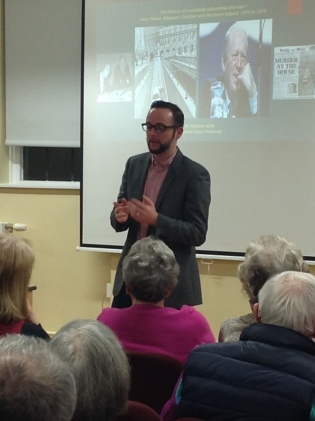
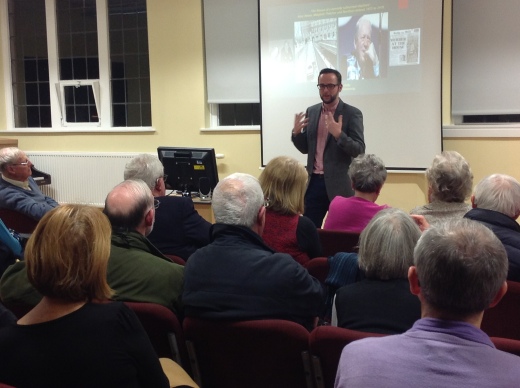 Dr Kelly explored Neave and Thatcher’s attitude to Northern Irish devolution and their interest in power sharing or majority rule. Thatcher had never played any role in conservative Irish policy so she followed Neave’s policy. Warning the audience to bear in mind that the 1975 Labour administration was contemplating leaving Northern Ireland altogether and letting the UN take over, Dr Kelly pointed out that Neave chenged his policy on that north at that time. Having initially suported develotution, by 1975 he could see that it wasn’t working, so insted, he suggested regional councils.
Dr Kelly explored Neave and Thatcher’s attitude to Northern Irish devolution and their interest in power sharing or majority rule. Thatcher had never played any role in conservative Irish policy so she followed Neave’s policy. Warning the audience to bear in mind that the 1975 Labour administration was contemplating leaving Northern Ireland altogether and letting the UN take over, Dr Kelly pointed out that Neave chenged his policy on that north at that time. Having initially suported develotution, by 1975 he could see that it wasn’t working, so insted, he suggested regional councils.
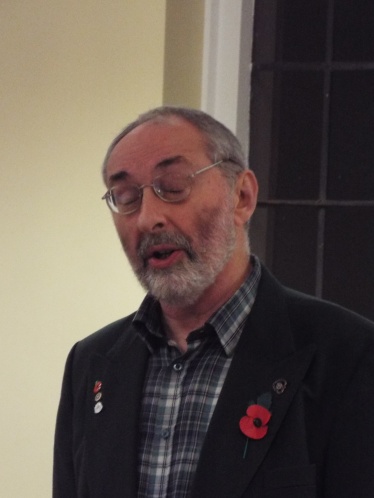 Emeritus Professor of International Relations at Aberystwyth, Martin Alexander, spoke to the branch in early November about the significance of the Battle of the Little Big Horn. It was an excellent evening with an audience worthy of the speaker – our numbers were swelled by visiting donors to the school. The title of Prof. Alexander’s talk was ‘Today is a good day to fight – the Montana campaign and Battle of the Little Big Horn’.
Emeritus Professor of International Relations at Aberystwyth, Martin Alexander, spoke to the branch in early November about the significance of the Battle of the Little Big Horn. It was an excellent evening with an audience worthy of the speaker – our numbers were swelled by visiting donors to the school. The title of Prof. Alexander’s talk was ‘Today is a good day to fight – the Montana campaign and Battle of the Little Big Horn’. He began by ascribing the conflict to the pressure of whites moving westwards into native American territories. The driver for this migration was economics, as gold had been found in the Black Hills. But the migrants were desperate for gold because there’s been a catastrophically deep economic crash, not because of greed. The industrial heartlands of Pittsburgh & Chicago were facing particularly hard times and high levels of unemployment. Those without jobs went west, not looking for fortunes but to survive and subsist. They wanted to ranch, work on farm or to prospect for gold.
He began by ascribing the conflict to the pressure of whites moving westwards into native American territories. The driver for this migration was economics, as gold had been found in the Black Hills. But the migrants were desperate for gold because there’s been a catastrophically deep economic crash, not because of greed. The industrial heartlands of Pittsburgh & Chicago were facing particularly hard times and high levels of unemployment. Those without jobs went west, not looking for fortunes but to survive and subsist. They wanted to ranch, work on farm or to prospect for gold.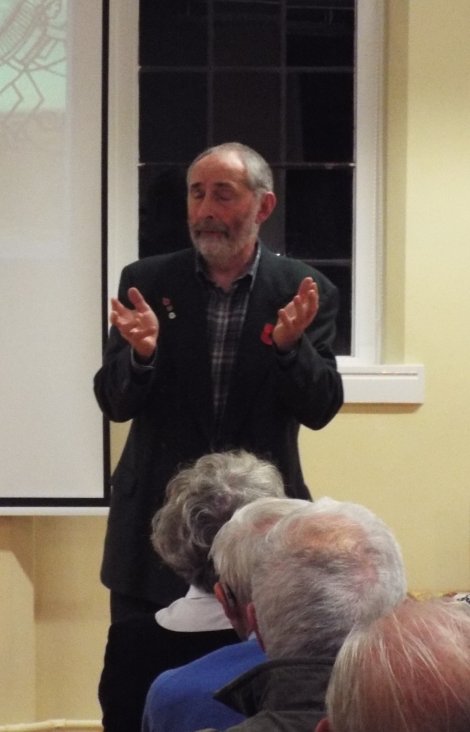 Sherman and Sheridan were the commanders of the army, but although they were field marshals, they were not the grand masters of the campaign. They believed fully in the manifest destiny of the whites to settle these areas. Sheridan was in the cavalry and organised a three pronged force. Many of the commanders were experienced soldiers, but not experienced in fighting irregular forces such as the natives. It was Custer who was experienced in this area, so he was the field he key general was Custer. Although he’d nearly been thrown out of military training and come bottom of his class at West Point, he’d performed great service in the civil war. In the eyes of many union commanders and his own soldiers he could do no wrong. According to Prof. Alexander, Custer was brave but not always smart. He came from a quite poor background and he wanted glory and fame, in what was the first modern media age. On the expedition in the 1876 campaign he had with him a Canadian journalist.
Sherman and Sheridan were the commanders of the army, but although they were field marshals, they were not the grand masters of the campaign. They believed fully in the manifest destiny of the whites to settle these areas. Sheridan was in the cavalry and organised a three pronged force. Many of the commanders were experienced soldiers, but not experienced in fighting irregular forces such as the natives. It was Custer who was experienced in this area, so he was the field he key general was Custer. Although he’d nearly been thrown out of military training and come bottom of his class at West Point, he’d performed great service in the civil war. In the eyes of many union commanders and his own soldiers he could do no wrong. According to Prof. Alexander, Custer was brave but not always smart. He came from a quite poor background and he wanted glory and fame, in what was the first modern media age. On the expedition in the 1876 campaign he had with him a Canadian journalist. Three main characters populated Dr Fletcher’s lecture: Pope Alexander VI (elected in 1492); his illegitimate son, Cesare, Duke of Valentinois; and Lucretia, Alexander’s daughter. Another important person was another son – the Duke of Gandia – Juan or Giovanni. He was murdered and his body thrown in the Tiber. His killer was never identified, not least because there were many people with grudges. The Pope refused to blame various people who’d been identified as possible culprits, which suggested that he knew who had commited the murder but wouldn’t say for political reasons. Cesare comes into the frame because he benefited from Juan’s death and rumours that he was responsible for the murder surfaced 9 months later. This led people to wonder whether the pope abandoned the search for Juan’s murderer because it was his own son?
Three main characters populated Dr Fletcher’s lecture: Pope Alexander VI (elected in 1492); his illegitimate son, Cesare, Duke of Valentinois; and Lucretia, Alexander’s daughter. Another important person was another son – the Duke of Gandia – Juan or Giovanni. He was murdered and his body thrown in the Tiber. His killer was never identified, not least because there were many people with grudges. The Pope refused to blame various people who’d been identified as possible culprits, which suggested that he knew who had commited the murder but wouldn’t say for political reasons. Cesare comes into the frame because he benefited from Juan’s death and rumours that he was responsible for the murder surfaced 9 months later. This led people to wonder whether the pope abandoned the search for Juan’s murderer because it was his own son? Dr Fletcher then examined the story’s cultural journey from actual history to myth, and in doing so, she provided the audience with a fascinating glimpse into the way history reflects the time in which it was written. The blackening of the Borgia name began with the election of Pope Julius II. Italians were xenophobic and resented foreigners, and Naples was invaded – Italy was being used as a battlefield by other powers. Stories circulated that Alexander’s election was a result of a pact with the devil. Protestants lapped this up and spread the tale. One of the principal agents in this was the English printer, John Bale, who wrote his Pageant of the Popes in 1550. Now the Pope was equated with the Devil.
Dr Fletcher then examined the story’s cultural journey from actual history to myth, and in doing so, she provided the audience with a fascinating glimpse into the way history reflects the time in which it was written. The blackening of the Borgia name began with the election of Pope Julius II. Italians were xenophobic and resented foreigners, and Naples was invaded – Italy was being used as a battlefield by other powers. Stories circulated that Alexander’s election was a result of a pact with the devil. Protestants lapped this up and spread the tale. One of the principal agents in this was the English printer, John Bale, who wrote his Pageant of the Popes in 1550. Now the Pope was equated with the Devil.
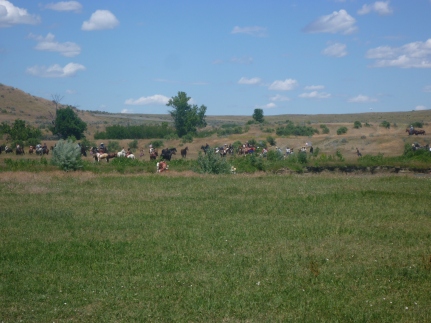 Among the ridges, steep bluffs, and ravines of the Little Bighorn River, in south central Montana on June 25-26, 1876, The US 7th Cavalry, commanded by Lieutenant Colonel George A. Custer, fought with warriors of the Lakota Sioux, Northern Cheyenne & Arapaho tribes in a battle that would come to be seen as a showcase of American heroism and glory, as well as a clash of two fundamentally different cultures.
Among the ridges, steep bluffs, and ravines of the Little Bighorn River, in south central Montana on June 25-26, 1876, The US 7th Cavalry, commanded by Lieutenant Colonel George A. Custer, fought with warriors of the Lakota Sioux, Northern Cheyenne & Arapaho tribes in a battle that would come to be seen as a showcase of American heroism and glory, as well as a clash of two fundamentally different cultures.